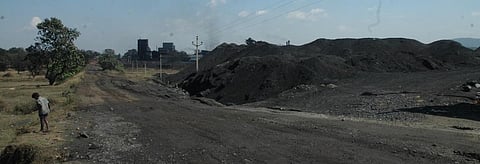

The Union Ministry of Mines (MoM) has put out a set of recommendations to improve implementation of District Mineral Foundation (DMF) in various mining districts of India:
The recommendations were shared during the first national-level workshop on DMF and Pradhan Mantri Khanij Kheshtra Kalyan Yojana (PMKKKY), organised by MoM in New Delhi on January 18, 2019.
District collectors or district Magistrates, CEOs of zila parishads, officials from state mining departments including secretaries, senior officials of other central ministries, including ministry of health, women and child development, rural development, and others attended the meeting.
As indicated by MoM, the main objective of the workshop was to review implementation status of DMFs in various states and districts, and to consider strategies to address challenges in DMF implementation.
DMF has been instituted as a non-profit trust under the Mines and Minerals (Development and Regulation) Amendment Act 2015, with the precise objective to ‘work for the interest and benefit of persons, and areas affected by mining-related operations’.
It was born out of decade-long deliberations to address the socio-economic deprivation that people in mineral-bearing areas suffer from. DMFs come with the obligation to remove such deprivation through inclusive development and decision-making process.
As of now, DMF trusts have been set up in 557 districts across 21 states. The total amount accrued to DMFs considering all districts is more than Rs 23,000 crore. However, this is just the tip of the iceberg. The MoM further estimates an accrual of more than Rs 2.5 lakh crore in DMFs in the next 25 years.
The money in DMFs comes through statutory contribution from mining companies, which are required to pay an equivalent of 30 per cent of the royalty amount for leases granted before enactment of the 2015 Act, and 10 per cent for leases granted after that.
Speaking at the occasion, Union Minister of Mines Narendra Singh Tomar said the money can bring significant relief to mining-affected regions and people. He noted that to ensure this, the districts should have target-based projects and should focus on timely deliveries.
Potential can be wasted
“As we enter the fifth year of DMF implementation, it is time we sort out the planning and implementation issues. Without a bottom-up and systematic planning process and proper institutional structure, DMF will not be able to deliver. We also need the involvement of the beneficiaries in planning and monitoring to make DMF transparent and accountable,” says Chandra Bhushan, deputy director general of Delhi-based Centre for Science and Environment (CSE).
CSE has been following the implementation of DMF in key mining states and districts across India. A study released by CSE in July 2018, which reviewed DMF administration, accountability and investment trends across 50 top mining districts, showed that poor planning and administration is leading to ad-hoc use of DMF funds, and is not resulting in benefits for mining-affected people as needed.
The MoM has also taken note of the situation and recommended strengthening of DMF administration, planning and accountability instruments to improve implementation.
The government is also considering improving the PMKKKY guidelines, which essentially outlines some of the key administrative and investment issues that DMFs must consider and is part of all state DMF Rules.